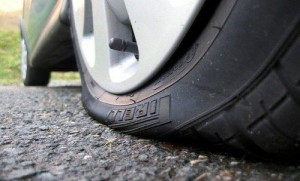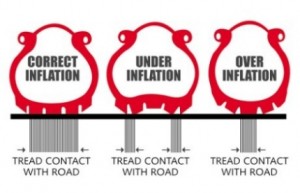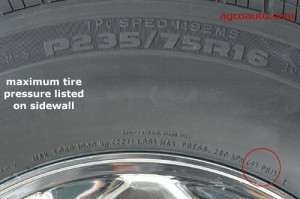 When we talk about safe driving, we often discuss things like distracted driving, wearing a seat belt, drinking and driving, and other aspects of driver behavior. However, an aspect of driver behavior that impacts safety, but is hardly ever talked about in this way, is tire maintenance. Flat tires and tire blowouts are unsafe situations for both you, and everyone else on the road, but it’s often not considered a part of ‘safe driving.’ We’re here to say that it is, and that the best thing to do about is it to have nitrogen-filled tires. Here is how nitrogen-filled tires improve safety:
When we talk about safe driving, we often discuss things like distracted driving, wearing a seat belt, drinking and driving, and other aspects of driver behavior. However, an aspect of driver behavior that impacts safety, but is hardly ever talked about in this way, is tire maintenance. Flat tires and tire blowouts are unsafe situations for both you, and everyone else on the road, but it’s often not considered a part of ‘safe driving.’ We’re here to say that it is, and that the best thing to do about is it to have nitrogen-filled tires. Here is how nitrogen-filled tires improve safety:
Proper Tire Pressure for Longer Periods of Time
A recent study from the National Highway Traffic Safety Administration found that vehicles with tires underinflated by 25% or more were three times as likely to be involved in the crash linked to tire problems. The study also found that 66% of tire-related crashes involved passenger cars. This means that proper tire pressure is critical for safety, and nitrogen-filled tires have been found to maintain proper tire pressure for longer periods of time. On top of that, over half of all the vehicles on the road have at least one underinflated tire, so even if your tires are okay, many others on the road probably aren’t and could be putting you in jeopardy. So, with nitrogen tire inflation, you are not only doing your best to drive safely, but you are also doing something about the safety of others on.
Less Susceptibility to Temperature Changes
This is a point that nitrogen naysayers will argue that doesn’t apply to normal drivers. Just because you aren’t driving 300 miles an hour doesn’t mean that temperature changes don’t happen when you are driving. The temperatures do change, simply because driving around moves the tires and that movement heats them up. It happens with a lot of things that move, or when they move, as that’s how things work. However, air-filled tires are mores susceptible to that because of the moisture in the air.
This is especially crucial for long road trips in the summertime, when the tire will not only be hot for a long period of time, but everything outside of the tire will be hot as well. When tires are hot, say 120 degrees, and are that hot for a couple of hours (which they could be during a road trip or even a 3-hour drive), there is increased risk for a blowout. The moisture, and the oxygen, are much more reactive to temperature changes, therefore increasing the chances of hitting 120 degrees and being there for a longer period of time. Nitrogen-filled tires do not have this problem because they do not have moisture or oxygen.
Improved Road Handling
When tires are at their proper tire pressure, when the tire pressure isn’t fluctuating with the temperature changes, then those tires handle the road better. This is because proper tire pressure keeps the tire wear even and maintains full tread contact with the road, as seen in the picture to the left. Obviously, the tire with the correct inflation is the safest, and looks most likely to handle a sudden swerve or slick road conditions. The previously-mentioned study did find that underinflated tires were more likely to experience problems in bad weather.
If you want to be a safe driver, whether for yourself or for your family, then nitrogen-filled tires are the way to go. Behavior doesn’t mean as much if the vehicle you’re driving is not in the best and safest condition possible for the roadways and those with whom you share the road.







